Echoes of the Past - Communist Cameras and Radioactive Glassware
2023/03/30
Disclaimer: historical information presented here may not me accurate, as I am writing from memory
Reigns, Remains, and Online Consumer-To-Consumer Sales
The history of the world is littered with the remains of fallen empires. Among crumbling temples and buried tombs and lonely towers, the dying ambitions of brutal reigns fade into memory, then legend, then myth. In the end, only howling winds and weathered stone are left, washed ever into nothingness by the soft spring rains. No matter how much power one seizes, it will one day return to the land. To nature. To the humble lives of the common people, drifting across a passing world.
Sometimes, however, the remains of these empires end up on eBay.
And in the case of the well-meaning but catastrophically dogmatic Soviet Union, there are a lot of remains on eBay. Want an old wind-up watch with a hammer and sickle on the clock face? There's dozens of 'em, just waiting to be shipped out of dusty attics in Ukraine and Belarus. Want worn-out pins and KGB badges and fur caps sewn with red stars? Well, there's plenty of people in Russia willing to sell their grandparents' old memorabilia for spare cash. And if you are like me a few months ago, and you desperately wanted a Leica III without paying the full price of a Leica III, there are for sale a veritable mountain of Soviet film cameras designed after stolen blueprints from the likes of Leica and Contax. That is how, in early February, I finally decided to order a FED-2D camera from a relatively reputable seller in Kyiv, Ukraine.
I find the history of these cameras rather fascinating. In the 1930s, the fledgling Soviet Union wanted to invest in high-tech manufacturing to bolster their economy and prove the power of communism to the world. In Kharkiv, Ukraine (then Soviet Ukraine), there was a children's labour commune named after Cheka chairman Felix Edmundovich Dzerzhinsky——FED. Originally producing simple machinery such as drills, it was tasked in 1932 with producing copies of the German Leica camera. After the devastation of the Second World War and the years of rebuilding that followed, it was joined by another factory, Krasnogorsk Mechanical Factory (KMZ), in building Leica clones (the KMZ ones were sold under the name Zorki). By the early 1950s, as the Soviet Union began to prove itself in the world stage, it also became home to a formidable camera industry that sold very inexpensive but reasonably functional photographic equipment throughout Europe and Asia. Over the following decades, more manufacturers such as Kiev and LOMO emerged with their own (mostly) unique designs and improved upon existing models, all in all producing millions of film cameras until the USSR's inevitable dissolution in 1991.
Even now, more than thirty years after the collapse of communism, many cameras on the second hand market bear the echoes of a fallen empire. Just search "film camera" on eBay or Etsy or a similar site, and you will soon be met with listings of the classic FEDs and Zorkis, the venerable Kievs, the funky LOMOs, and the... well, copiously produced Zenits. And if you're looking for good performance at skip-morning-starbucks-for-two-weeks prices, they are excellent options.
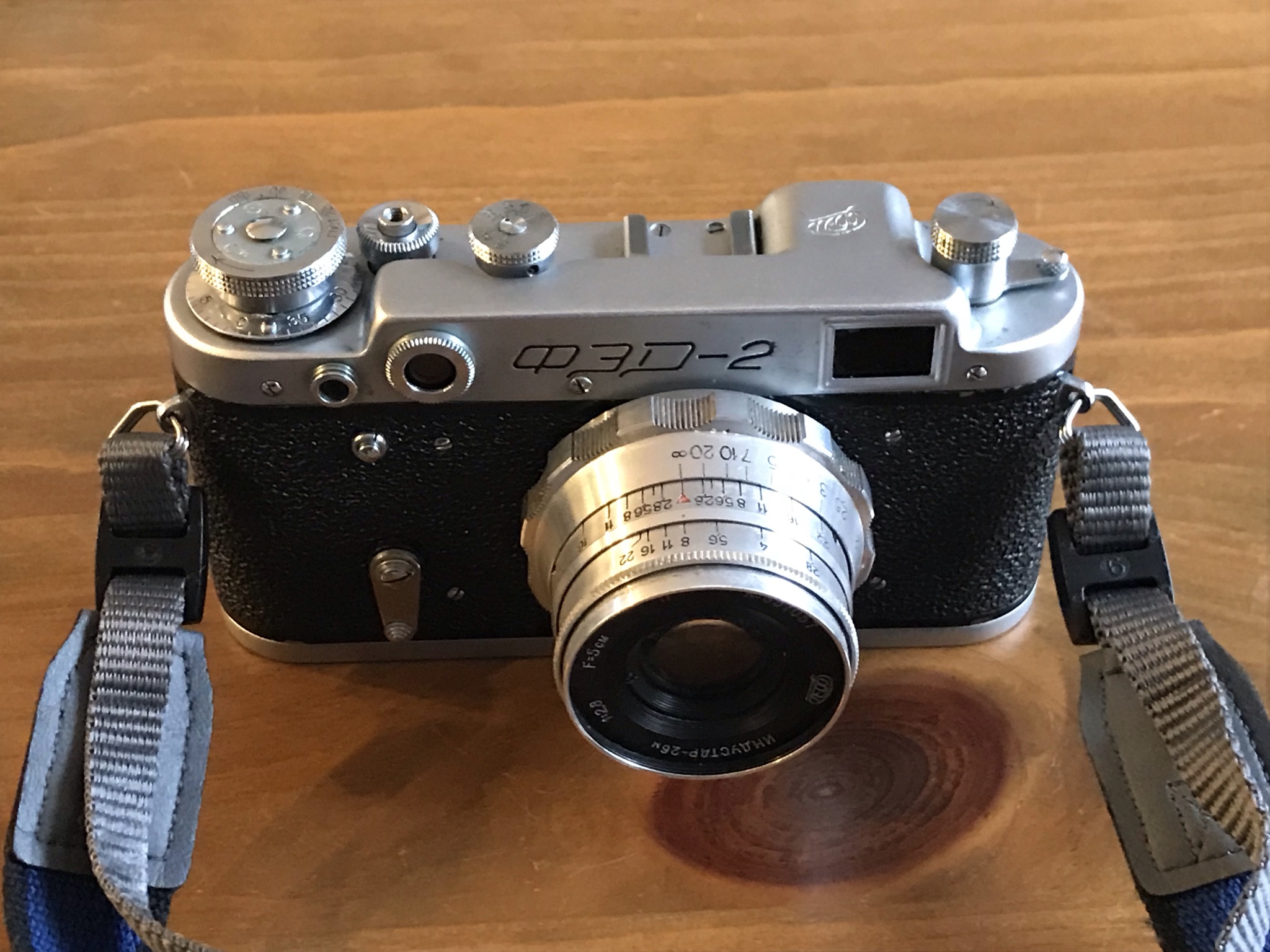
Pictured above is my new-to-me FED-2D. It arrived about a week ago after more than a month and a half in shipping, and is in excellent condition for something that is at least 60 years old. Every shutter speed works with the lower speeds only requiring a slight shutter tension adjustment, the self-timer is functional, the winding mechanisms are nice and smooth, and the lens is free of fungus and scratches. I love using old things for their intended purpose in the modern day, and this camera is no different. If it had a mind, it would certainly be surprised to find itself an ocean away from Ukraine, and still in use after more than two generations, despite its country of manufacture having long collapsed and its very purpose long obsolete. I can imagine it wearily chewing through rolls of film once again after god knows how long, wishing only for rest after a life decades protracted from its original intent. But no, I will not let it rest. It still has years ahead to go, taking mediocre pictures of gas stations and street corners and cloudy sunsets.
And on that subject, here are some photos from the first roll I put through it, taken on Rollei Retro 400S film.
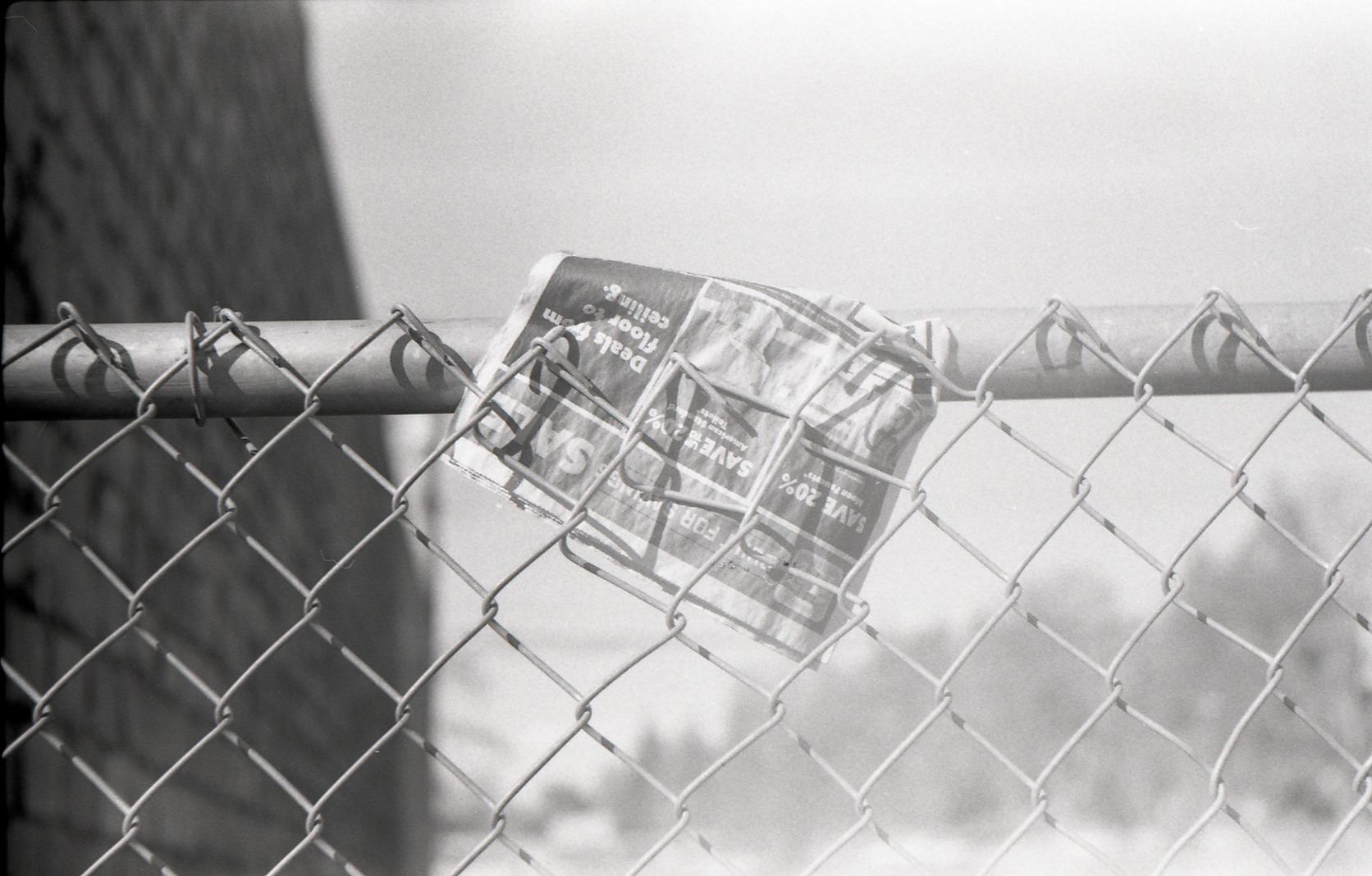
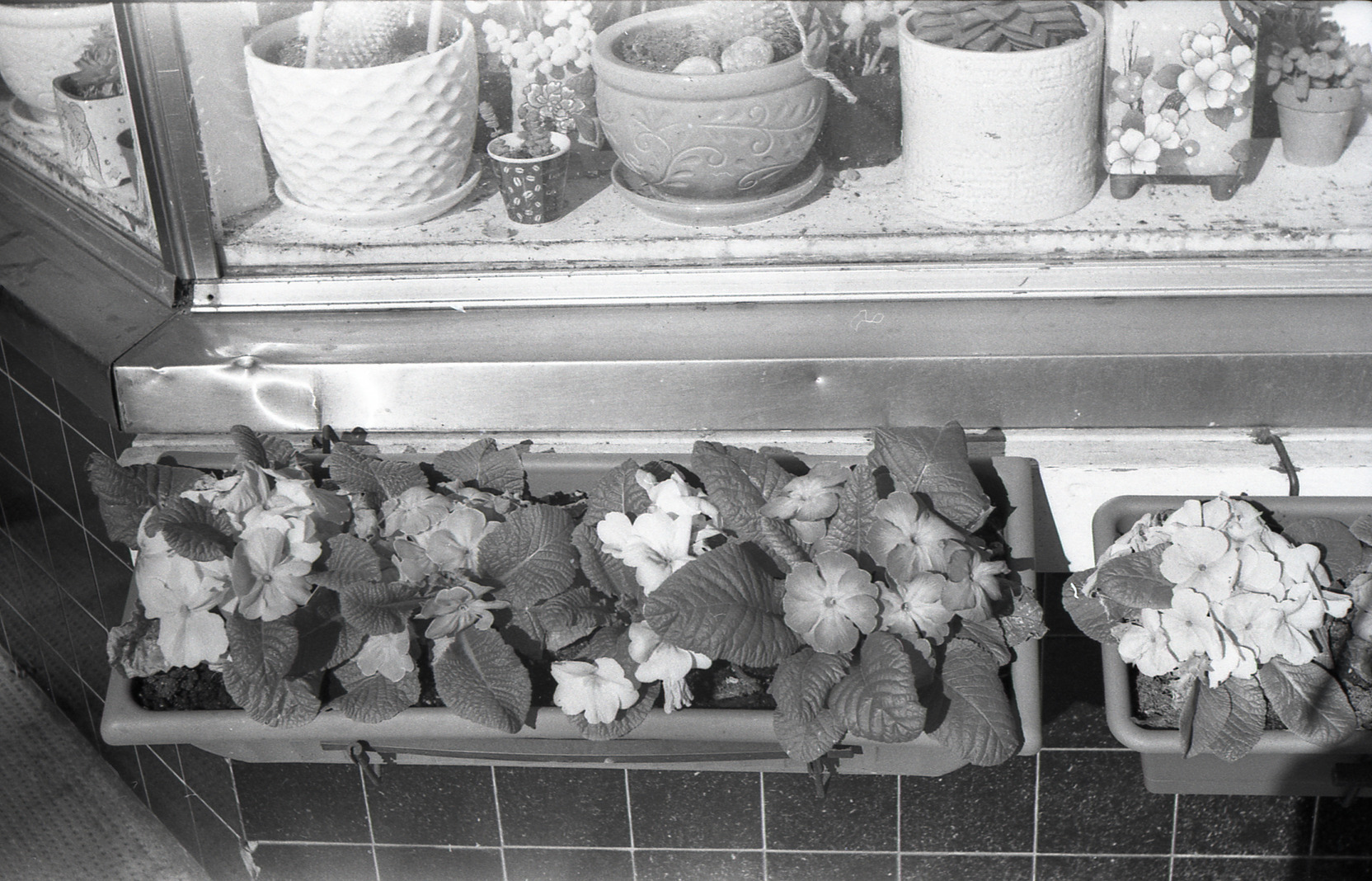
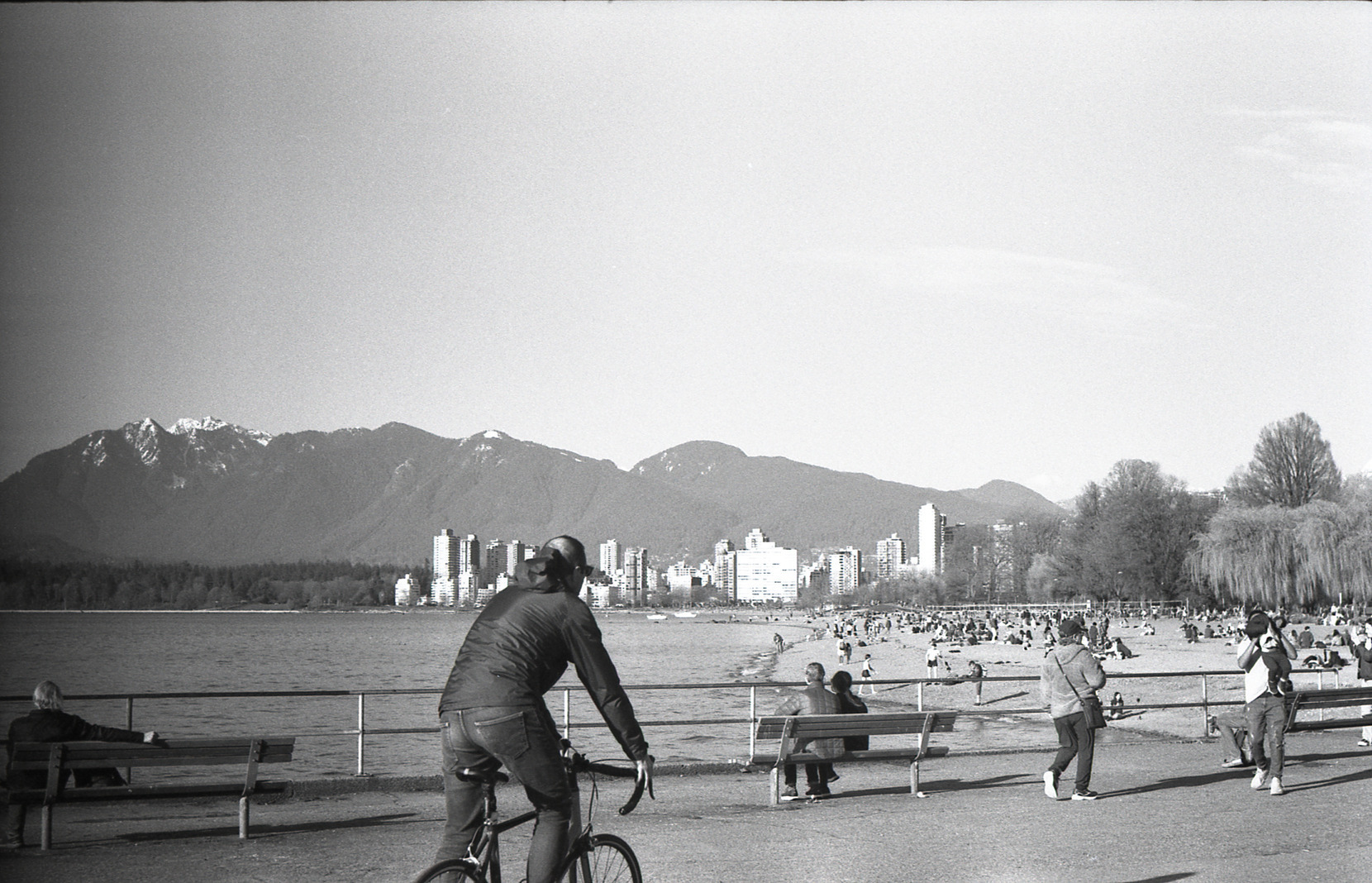

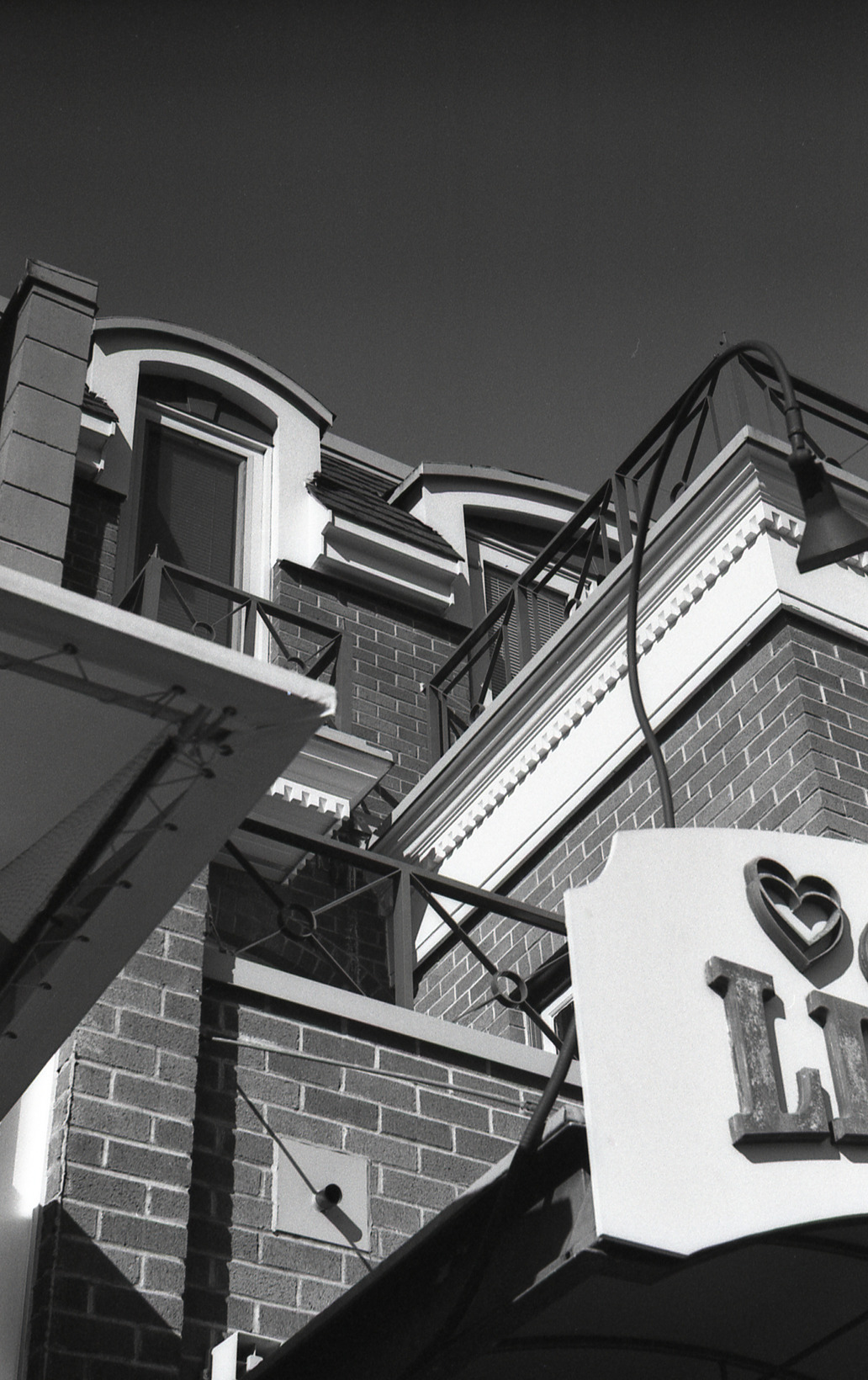
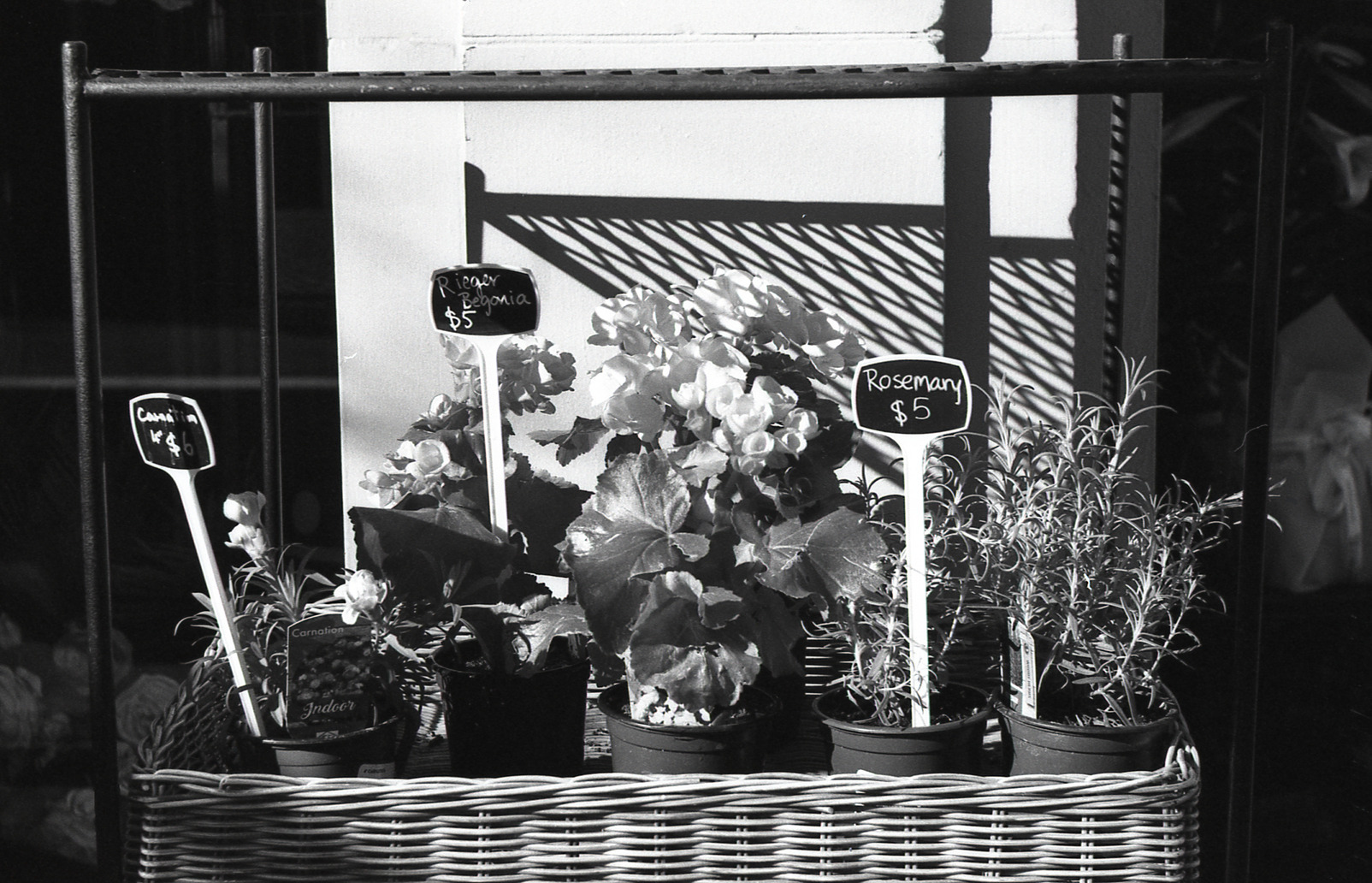
Surprisingly, there were no light leaks, and the lens proved decent. The lack of slow shutter speeds (only down to 1/30s, though there is of course B) is a bit limiting, but the camera works perfectly well for daylight. Moreover, the rangefinder is very easy to use, owing to the wide base. The lens——an Industar-26m——is, well, a lens. It works. Sharpness? Yeah, it has detail. Saturation? Sure, it lets through red, green, and blue light. Speed? Well,the aperture opens fully. All in all, nothing really stands out about it. It is rather prone to sun flares when pointed near the sun, and edge distortion when used in macro shots, but those problems aren't too significant and can actually add to the artistic value of the photographs. My only real gripe with the camera is how hard it is to rewind the film: the rewind knob left my thumb painfully sore, and it got stuck for some reason halfway through leading me to think it was fully rewinded and open the camera back, ruining a good 5 frames.
Overall, I would recommend the FED-2D. It's nice and compact, a cool piece of history, and fun and satisfying to use. If you're looking for a fully mechanical budget rangefinder, look no further.
TLDR: USSR made film cameras, they are cheap and basic but good for their purpose, and the FED-2D in particular is reliable and fun to use. Just make sure to turn the rewind knob really hard.
Glassware That Looks Cool and Glows But Which You Probably Shouldn't Eat Out Of
What's the first thing that comes to your mind when you hear the words "Depression Glass?" Well, if you've somehow read to here, you're probably thinking "that sounds like me." Well, my depressed glass-hearted friends, you could be are wrong. There is hope ahead despite all the doom and gloom in the world and your life. And there is some really cool vintage glassware that you can get your hands on if you know where to look. That, is depression glass.
While the Soviet Union was making cameras, the rest of the world, especially the United States, was putting uranium oxides in glassware. In the roaring 1920s and the Great Depression of the 1930s, various factories and artisans made elaborate and beautiful plates, cups, and more using glass mixed with uranium oxide diuranates, giving them a unique yellow-green colouration that turns to bright fluorescent lime under a blacklight. There are many varieties of this so-called uranium glass, from the transparent to the opaque, from mellow green to striking yellow, and all of them are very cool collectibles. From the 1940s onward, uranium glass pretty much stopped being produced on account of all the uranium being instead used for reactors (epic) and bombs (cringe). As such, uranium glass is quite rare nowadays and almost always very old.
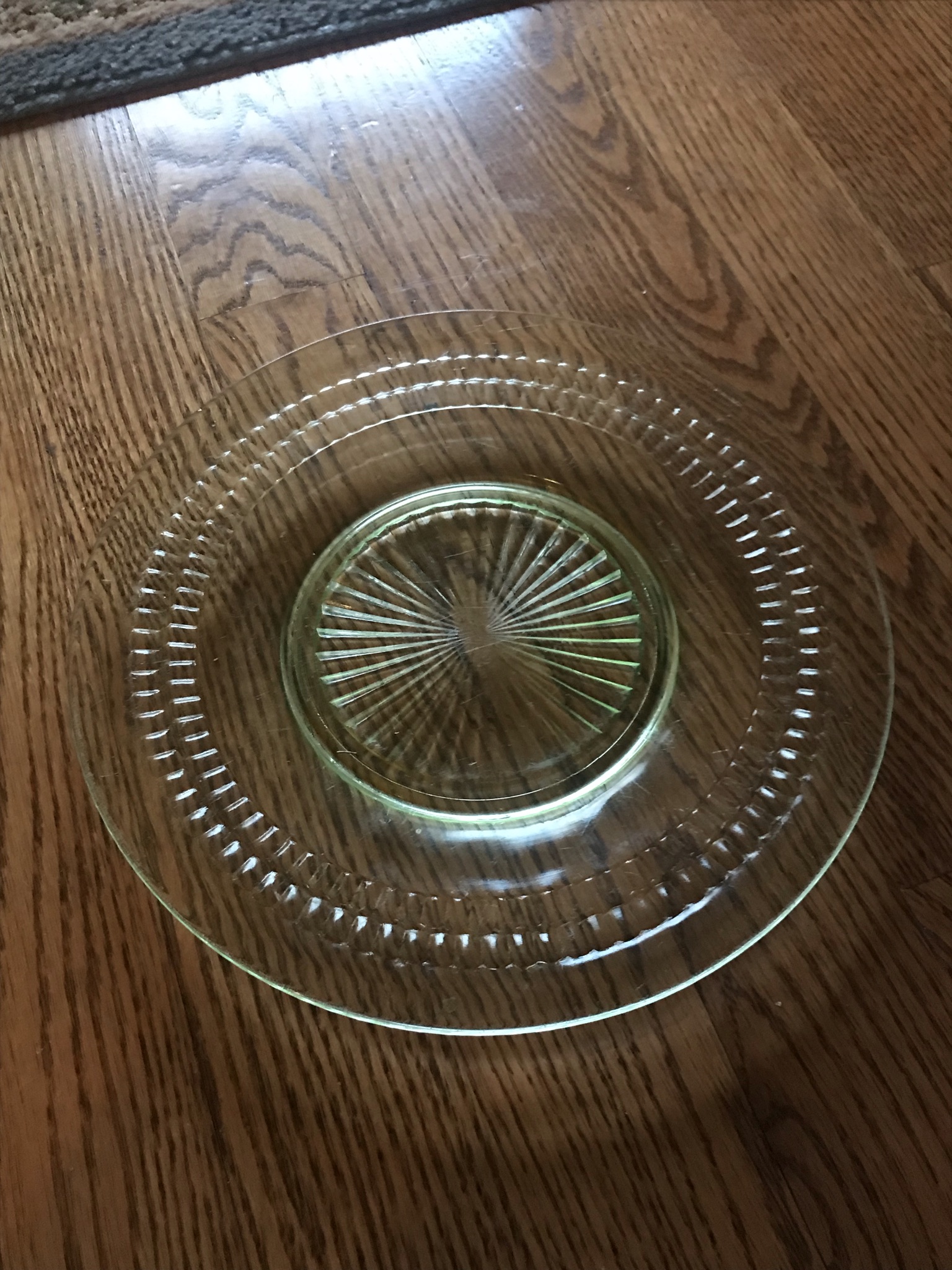
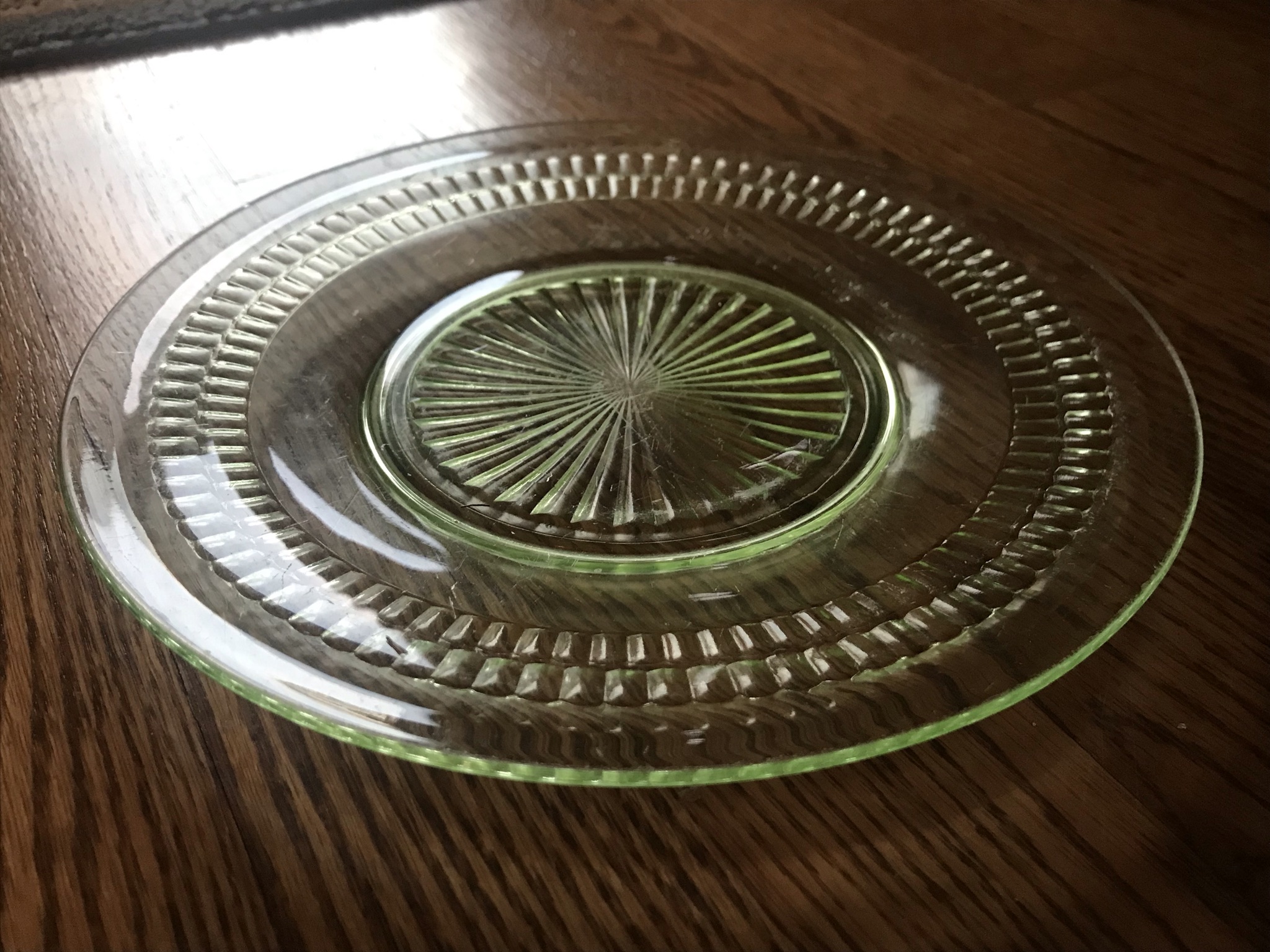
A few days ago, I found a uranium glass plate at a combination thrift store/food bank. It went for 22 dollars, but the owner was nice and gave me a discount, and I walked away with only 14 dollars down from my wallet and a badass antique plate in my backpack. It has angular ridges and bold waves remniscient of the Art Deco movement (which is one of my favorite aesthetics), and is tinted a nice subtle yellow-green. I think it's really cool, and it certainly looks really cool among my other boring thrift store ceramic plates. As it contains uranium, I'm probably not going to eat from it too much, but yeah. Uranium glass! I love these weird old things, and I'm certainly glad to have this weird old thing that's still useful a century or so later.
Whew. That's a lot of text, and a lot of history. We really do need to connect to our history to prepare for the future, and using things from history is a great way to do so. They are not just relics, but tools that can still serve us today. And more than that, they are echoes of the past; they represent the lives and cultures of people that lived long ago, and yet were just as human as you or I today. They are left from times long gone, but they are proof that those times have passed. They are us, and by keeping these echoes around and keeping them useful, we remind ourselves to look beyond the vanity and dogma of the present, to look into our deep and storied past, and to forge ahead toward an uncertain but certainly bright future.
That's all I have for now. Fare thee well, peace out, and live long and prosper.
